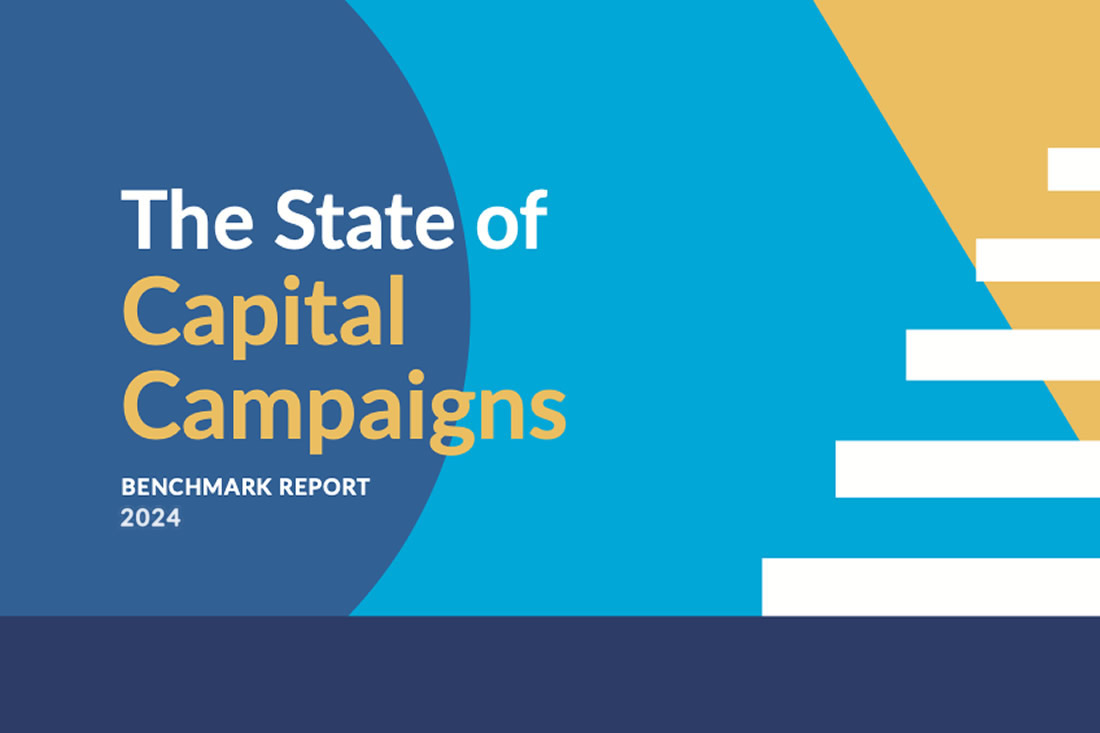The Phases of a Capital Campaign: A Bird’s Eye View

I’ll bet you’ve heard people talk about the quiet phase and public phase of a capital campaign. You may also have been to a campaign kick-off. But do you really know what those things are and why they matter?
In this post, you’ll learn about the basic shape or timeline of a capital campaign and just what happens when.
The most successful capital campaigns follow this basic structure. And if you’re planning a campaign, you’d better understand how it works and why.
How A Capital Campaign of Any Size is Structured

As you can see in the graphic above, campaigns are divided into two main phases (the Quiet Phase and the Public Phase) separated by a campaign kick-off.
The Quiet Phase of Your Capital Campaign
Quiet doesn’t mean secret! You can (and will) be talking about your campaign during this phase — you just won’t be talking to the press or getting word out broadly.
During the Quiet Phase, you will use a “soft” or “working” goal that you might increase or decrease, depending on your fundraising success during these early solicitations.
This is the work-horse phase of your campaign.
- You’ll plan your campaign and then raise well over half of your campaign goal.
- You’ll prepare your case for support, identify your campaign leaders, and develop a specific campaign plan that includes timetables, the case for support, campaign policies and much more.
- You’ll engage and solicit your largest or “lead” donors. And you’ll solicit the people closest to your organization — your board members and the members of your campaign committee.
The gifts you solicit during this quiet phase are often referred to as “Advance Gifts.” Collectively, the money you raise during this pre-announcement period is called the “Nucleus Fund.”
Once you have commitments for between 50% and 70% of your campaign goal, you’ll be ready to finalize your campaign goal and make your campaign public.
Yes, when your campaign success is all but certain, you’ll be ready to “kick off” your campaign.
The “Kick-off” for Your Capital Campaign
All through the Quiet Phase of your campaign, you’ll use a “working goal” — but now, at the kick-off, you’ll announce a firm goal. That’s the goal you’ll publish. It’ll be based on how much money you’ve already raised and how much more you believe you will still be able to raise.
You’ll have a press conference and a party to announce your campaign, celebrate the donors who have already made gifts and get everyone excited about raising the rest of the money.
Campaign kick-off events vary greatly depending on the size, budget and style of the organization. We’ve been to fancy sit-down dinners for big, high-profile cultural institutions. And we’ve been to hot-chocolate celebrations under a tent at the building site of a small elementary school.
Both kinds of kick-off events accomplished the same task of serving as a transition between the quiet phase and the public phase. Both worked because they fit the style of the organization.
The Public Phase of Your Capital Campaign
As the name implies, your campaign becomes public during this phase.
This is when you’ll invite the community in, launch your efforts to raise the mid-level gifts, and finally, you’ll encourage everyone and their third cousin to give whatever they can to get you over the top. From here on out, regular reports of your progress show up everywhere.
This, the most visible part of the campaign, is when you’ll have articles in the paper, big thermometers showing your progress and swag. It’s when you’ll solicit gift in person and by mail and email and your website. This is when you might launch a crowd-sourced fundraising campaign to get your campaign over the top.
Campaign Follow Through
Finally, once you do get over the top, you’ll move to campaign follow through. Technically, this is still part of the Public Phase.
During this stage, you’ll not only want to celebrate the success of your campaign, you’ll also want to make everyone connected with the campaign feel excited to have been part of the success. This final part of your campaign includes everything from recognizing your donors, to bringing in pledges and thanking volunteers and staff for their great work.
The success of the work you do in this follow through stage of your campaign will make a huge difference in your organization’s ongoing fundraising. It’s much more than a final wrap up — it’s really a transition to your future fundraising.
Learn More about Capital Campaigns
To receive regular information about how to make the most of your capital campaign, from start to finish, sign up for our newsletter. You’ll receive tons of free capital campaign advice. Our newsletter is a MUST-READ if you’re considering or planning a capital campaign.



Leave a Comment